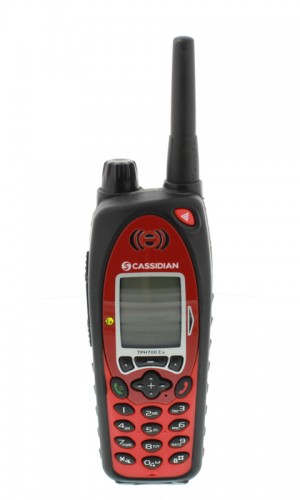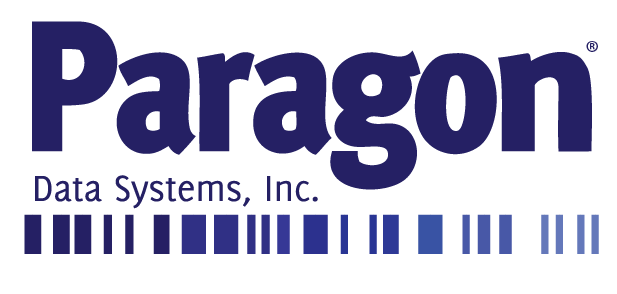WHAT DOES IT MEAN TO BE INTRINSICALLY SAFE?
Intrinsically safe design is a protection technique applied to electrical and wiring products used in a hazardous location. In simple terms, intrinsically safe devices are limited in the amount of electrical and thermal output to prevent atmospheric ignition.
THE IMPORTANCE OF INTRINSICALLY SAFE DESIGN
Intrinsically safe electronics must be used in hazardous work environments- but what, exactly, makes these places dangerous? OSHA defines a hazardous location as an area where
“flammable liquids, gases or vapors or combustible dusts exist in sufficient quantities to produce an explosion or fire. In hazardous locations, specially designed equipment and special installation techniques must be used to protect against the explosive and flammable potential of these substances.”
– OSHA, Publication 3073
Companies that work within these hazardous locations are at reasonable risk of explosion, injuries, death, or environmental damage, and are therefore subject to GHS and intrinsic safety regulations. The “intrinsic safety” industries includes any business that manufactures, processes, or ships chemicals, oils and natural gas, mining, and fine-powered foods, as well as any facility where flammable substances are produced, mixed, distributed, or stored. If a company uses potential hazards in their everyday operations, they would also qualify.
ELIMINATING RISK
While the chance of an explosion or fire can be mitigated through various physical deterrents and safety measures, the risks increase exponentially when electrical devices are exposed to any of these combustible substances. In a world so heavily run by computers, this understandably complicates many industries. Imagine if miners weren’t able to use a flashlight without fear of setting off flammable gas! Obviously, most modern companies need electrical equipment to run their day-to-day operations- but how can they be certain that their workers will be safe?
DEVICE SEPARATION: THE FIRST LEVEL OF DEFENSE
Preventing a potential explosion begins by keeping hazardous products and materials separated from non-compliant hardware. By cutting off the problem at its source, you can eliminate the risk of explosion altogether, or isolate it from the majority of workers. Strategies for isolation include switching hazardous materials for non-hazardous substitutes, installing secure blast doors, utilizing safety kill switches, or redesigning the work process. When a hazardous substance or piece of electrical equipment cannot be removed or separated from the worksite, this is when specialized intrinsically safe hardware comes into play.
WHERE IS INTRINSIC SAFETY USED?
CHEMICAL PLANTS AND CHEMICAL TRANSPORT
Manufacturing, mixing, or shipping chemicals demands heavily-regulated safety measures to prevent injury, fire, or explosion
OIL DRILLING AND PETROCHEMICAL PLANTS
Oil rigs and drilling terminals, gas deposit harvesters, and petrochemical refining facilities work with volatile, explosive liquid products
PAINT MANUFACTURING AND MIXING COMPANIES
Businesses that create or mix paints or spray paint with industrial-scale aerosols need intrinsically safe hardware that won’t catch on fire
MINING OPERATIONS
Miners work deep underground in tight spaces and may encounter gas pockets or create fine powders prone to sudden explosions
FACTORIES WITH DUST PARTICLE BYPRODUCT
Grain processing plants, woodworking shops, or paper mills all produce thick, explosive atmospheres of fine dust particles
DISASTER RELIEF AND CLEANUP
HAZMAT teams, bomb disposal squads, and other biohazard first-responders need to have ignition-resistant equipment
EXPLOSIVE PRODUCTS MANUFACTURING
Weapons manufacturing facilities and explosion or propulsion testing centers must have strict, protective measures for employees
AVIATION HANGERS
Aircraft refuelling and repair facilities and airports utilize a high-quality, extremely combustible petroleum-based fuel

INTRINSICALLY SAFE DEVICES: ESSENTIAL PROTECTION FOR DANGEROUS ENVIRONMENTS
Ensuring workplace safety in hazardous environments requires the right equipment. Electrical devices must conform to exceptionally strict standards. Typically, most electrical equipment will create small internal arcs (sparks) as they run. Compact electric devices, such as phones, tablets, and flashlights even generate heat with prolonged use. During everyday use, these occurrences of heat radiation and small sparks are normal and harmless, but on work sites surrounded with combustible substances, they can easily become an ignition source and a catalyst for an explosion. When an overheated screen, faulty wiring, or a single spark can devastate a hazardous work environment, compliant product design is imperative for workplace safety.
To be intrinsically safe, an electrical device must be able to operate without outputting too much energy in these types of hazardous areas. To limit the probability of ignition, intrinsically safe equipment, especially class 1 division 1 rated products, run on simplified, low-current, low-voltage signal and control circuits. Electrical current is lessened by using multiple series resistors, and voltage is lowered through the use of several zener devices to ground. Sometimes, a galvanic isolation barrier is used instead, to keep components separated from each other. Whatever barrier ends up in the design, certification standards for hazard-safe products typically require that it remain within approved levels of voltage and current, so that no excess energy can be stored.

CLASS AND DIVISION RATINGS FOR HAZARD-SAFE PRODUCTS
Hazardous work environments are separated into classes and divisions, categories that define the level of safety features necessary for any device used or installed in this location. While the type of protection required will depend on the specific risks of the area, as a general rule, class 1 division 1 hardware is recognized as the most compliant with worldwide standards.
CLASSES
Classes define the general nature of hazardous materials in the surrounding atmosphere
CLASS 1: Flammable gases or vapors are nearly or always present in the air. Sparks or heat could easily produce an explosion or fire.
CLASS 2: Combustible dusts are present.
CLASS 3: Flammable fibers or dusts are present, but not enough that they are likely to be ignited if regular procedures are followed.
DIVISIONS
Divisions define the probability that a sufficient amount of hazardous material will be present to risk a fire
DIVISION 1: The substance referred to by class is present during normal operations.
DIVISION 2: The substance referred to by class is present only during abnormal conditions, most likely an emergency or system failure.
A further separation of hazardous materials can be found in the “groups” category of Article 500 of the National Electric Code.

